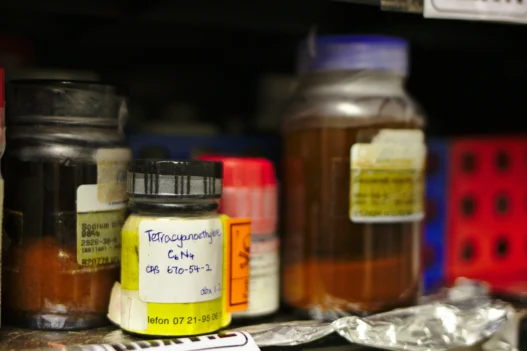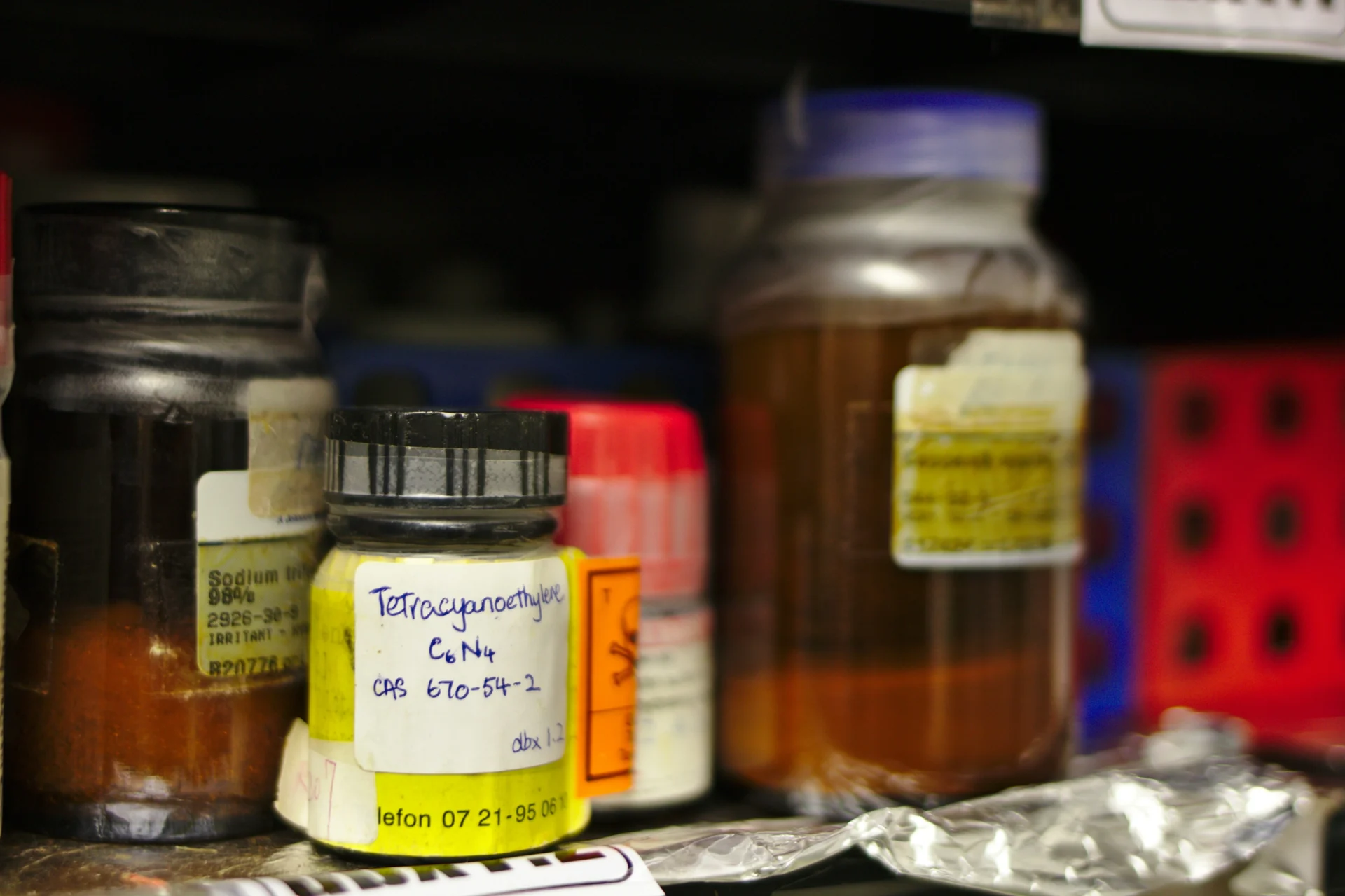Chrysophanic acid is a naturally occurring chemical compound found in certain plants such as rhubarb and aloe. While primarily used in traditional medicine for its potential anti-inflammatory and antimicrobial properties, recent studies have shown promise in its use in skincare products for treating various skin conditions. Due to its potential therapeutic benefits, chrysophanic acid has gained increasing interest in the beauty and wellness industries. Its relevance to everyday life lies in its potential role in improving skin health and promoting overall well-being.
Table of Contents:
- 💡 Commercial Applications
- ⚗️ Chemical & Physical Properties
- 🏭 Production & Procurement
- ⚠️ Safety Considerations
- 🔬 Potential Research Directions
- 🧪 Related Compounds
💡 Commercial Applications
Chrysophanic acid, also known as chrysophanol, is a natural phenolic compound commonly found in plants such as rhubarb and fungi like Aspergillus Niger. In commercial and industrial applications, chrysophanic acid is often used as a dye due to its bright yellow-orange color. It is commonly utilized in food coloring, textile dyeing, and the production of cosmetics.
Additionally, chrysophanic acid has been found to have antimicrobial properties, making it a valuable ingredient in the manufacturing of antifungal and antibacterial products. Its ability to inhibit the growth of various microorganisms has led to its use in the production of disinfectants, sanitizers, and other hygiene-related items.
In terms of drug and medication applications, chrysophanic acid has demonstrated potential therapeutic effects in various studies. It has been explored for its anti-inflammatory properties and is being researched for its potential in treating skin disorders such as psoriasis and eczema. Chrysophanic acid is also being investigated for its potential antioxidant and anticancer properties, although further research is needed to fully understand its mechanisms of action.
⚗️ Chemical & Physical Properties
Chrysophanic acid is a crystalline solid that appears as yellow or orange in color and has a distinct odor. It is commonly used in traditional medicine and as a dye.
With a molar mass of 254.25 g/mol and a density of approximately 1.49 g/cm³, chrysophanic acid is much lighter than common household items such as iron (molar mass of 55.85 g/mol, density of 7.87 g/cm³) and water (molar mass of 18.015 g/mol, density of 1 g/cm³).
Chrysophanic acid has a melting point of around 195-196°C and a boiling point of approximately 430-435°C. These values are higher compared to common household items such as sugar (melting point of 186°C) and water (boiling point of 100°C).
Chrysophanic acid is sparingly soluble in water and has a low viscosity. This is in contrast to common household items like salt (high solubility in water) and honey (high viscosity).
🏭 Production & Procurement
Chrysophanic acid, also known as chrysophanol, is a natural compound found in certain plants, fungi, and lichens. In terms of production, it can be extracted from a variety of natural sources using solvent extraction or other methods such as steam distillation. Additionally, chrysophanic acid can be synthesized in a laboratory setting through chemical reactions involving precursors.
The procurement of chrysophanic acid typically involves sourcing raw materials rich in the compound, such as certain plant species or fungal cultures. Once obtained, these materials are processed to extract the chrysophanic acid using methods like solvent extraction or chromatography. The purified compound can then be transported in its solid or liquid form, depending on the specific requirements of the end user or manufacturer.
In terms of transportation, chrysophanic acid is typically packaged and shipped in accordance with regulations governing the transportation of hazardous or potentially reactive substances. Depending on the quantity and destination, it may be transported by land, sea, or air in appropriate containers to ensure safety and stability during transit. Proper labeling and documentation are essential to comply with regulations and ensure the secure delivery of chrysophanic acid to its intended recipients.
⚠️ Safety Considerations
Safety considerations for Chrysophanic acid must be taken seriously due to its potential health hazards. This compound can cause skin and eye irritation upon contact, so handling with care is essential. It is advisable to wear protective gloves, clothing, and goggles when working with Chrysophanic acid to minimize the risk of exposure and injury. In case of accidental ingestion, immediate medical attention is necessary to avoid severe health consequences.
The pharmacology of Chrysophanic acid involves its ability to exhibit antimicrobial, anti-inflammatory, and antioxidant properties. Studies have shown that Chrysophanic acid can inhibit the growth of various bacteria and fungi, making it a promising candidate for antimicrobial therapy. Additionally, its anti-inflammatory effects have been observed in reducing inflammation and pain in various experimental models. The antioxidant properties of Chrysophanic acid further contribute to its potential therapeutic benefits in combating oxidative stress-related diseases.
Hazard statements for Chrysophanic acid include its classification as a skin irritant and eye irritant. The compound can cause redness, itching, and burning sensations upon contact with the skin, requiring immediate rinsing with water to prevent further irritation. In case of eye exposure, Chrysophanic acid may cause severe irritation and damage, necessitating thorough flushing with water and seeking medical attention promptly. Additionally, inhalation of Chrysophanic acid fumes or dust may lead to respiratory irritation, highlighting the importance of proper ventilation and respiratory protection when handling the compound.
Precautionary statements for Chrysophanic acid emphasize the importance of avoiding direct skin and eye contact, inhalation, and ingestion. It is crucial to work in a well-ventilated area and use appropriate personal protective equipment, such as gloves, goggles, and masks, to prevent exposure to Chrysophanic acid. In case of accidental exposure, it is recommended to seek medical advice immediately and provide relevant information about the compound for proper treatment. Proper storage of Chrysophanic acid in a cool, dry place away from incompatible substances is essential to minimize the risk of chemical reactions and potential hazards.
🔬 Potential Research Directions
One potential research direction for Chrysophanic acid is its anti-inflammatory properties and potential as a treatment for inflammatory conditions such as arthritis or inflammatory skin disorders. Studies could focus on understanding the mechanisms by which Chrysophanic acid exerts its anti-inflammatory effects and its potential as a natural alternative to traditional anti-inflammatory drugs.
Another avenue for research is exploring the potential anticancer properties of Chrysophanic acid. Preliminary studies have shown promising results in inhibiting the growth of cancer cells in various types of cancer, suggesting that it may have potential as a therapeutic agent in cancer treatment. Further research could investigate the specific mechanisms of action and potential synergies with other anticancer drugs.
Additionally, research could also be conducted on the antimicrobial properties of Chrysophanic acid. Studies have shown that it exhibits potent antimicrobial activity against a variety of bacteria and fungi, indicating its potential as a natural antibacterial and antifungal agent. Further research could focus on exploring its efficacy against multidrug-resistant pathogens and its potential applications in fighting infectious diseases.
🧪 Related Compounds
One similar compound to Chrysophanic acid based on molecular structure is Emodin. Emodin is a natural anthraquinone compound found in various plants and fungi. It shares a similar chemical structure with Chrysophanic acid, including a tricyclic ring system with oxygen atoms.
Another compound with a molecular structure similar to Chrysophanic acid is Physcion. Physcion is also an anthraquinone compound and can be found in certain plants and fungi. Like Chrysophanic acid, Physcion contains a tricyclic ring system with oxygen atoms, which contributes to its biological activity and pharmacological properties.
Rhein is another compound related to Chrysophanic acid based on molecular structure. Rhein is an anthraquinone derivative commonly found in plants like rhubarb. It possesses a similar tricyclic ring structure with oxygen atoms, making it structurally similar to Chrysophanic acid. Rhein has been studied for its various biological activities and therapeutic potentials due to its structural similarities with Chrysophanic acid.








